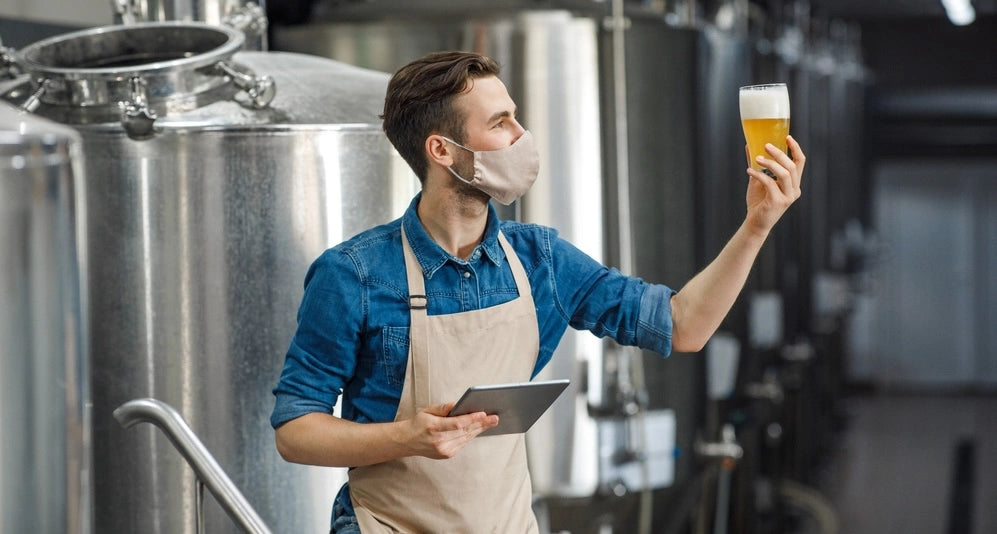In the restaurant industry, efficiency and innovation are paramount for success. iPad enclosures have emerged as transformative tools that redefine back-end operations, offering a range of applications that go beyond traditional processes. Let's delve into three dynamic use cases for iPad enclosures in the back end of a restaurant, supported by anecdotal evidence and valuable examples.
1 - Streamlined Order Management: iPad enclosures play a pivotal role in streamlining order management and facilitating communication with the kitchen. In a bustling restaurant that successfully integrated tablet kiosks into its back-end operations for order entry, waitstaff can input orders directly into the system, eliminating the need for manual order transcription. This not only reduced errors but also accelerated the order-to-table process, leading to increased customer satisfaction.
The integration of iPad enclosures with kitchen display systems (KDS) ensures that chefs receive real-time order updates, enhancing efficiency and minimizing delays. This use case not only optimizes back-end processes but also contributes to a more synchronized and responsive dining experience.
2 - Automated Inventory Management: Managing inventory and staying connected with suppliers are critical aspects of restaurant operations. iPad enclosures provide a user-friendly interface for real-time inventory tracking and supplier communication. A restaurant that adopted iPad enclosures to monitor inventory levels, automate reordering processes, and receive instant updates on product availability from suppliers is a restaurant that's always ready for tomorrow's customers.
By leveraging tablet kiosks to maintain a centralized inventory system, restaurants can reduce waste, optimize stock levels, and streamline the procurement process. This approach not only improves cost efficiency but also ensures that the kitchen is well-equipped to meet customer demand.
3 - Employee Training and Performance: iPad enclosures are valuable tools for employee training and performance monitoring in the back end of a restaurant. I recall a successful franchise that utilized iPad enclosures to deliver interactive training modules to kitchen staff. This hands-on approach not only enhanced learning outcomes but also allowed for real-time performance tracking, identifying areas for improvement and recognition.
The integration of iPad enclosures with employee management systems enables restaurants to track training progress, certifications, and performance metrics. This use case empowers managers to make data-driven decisions, ensuring a skilled and efficient workforce that contributes to overall operational excellence.
4 - Dynamic Menu Planning: iPad enclosures serve as dynamic tools for menu planning and managing daily specials. I've observed a restaurant that employed iPads to easily update menus, display high-resolution images of dishes, and promote daily specials. This not only eliminated the need for printing new menus but also allowed for instant changes based on ingredient availability or seasonal variations.
By incorporating iPad enclosures into menu planning, restaurants can adapt quickly to customer preferences, optimize pricing strategies, and showcase visually appealing offerings. This flexibility not only enhances the customer experience but also ensures that the back-end operations align with evolving market trends.
5 - Contactless Payment Processing: The integration of iPad enclosures for contactless payment processing contributes to a more efficient and hygienic back of house operation. One example involves a restaurant that implemented iPad enclosures for self-service bill payments. This not only reduced wait times for customers but also allowed staff to focus on delivering a memorable dining experience.
The contactless payment feature on the iPad aligns with current health and safety trends, providing customers with a convenient and secure way to settle their bills. Moreover, it accelerates table turnaround, optimizing restaurant capacity and increasing revenue potential.
In conclusion, the strategic implementation of iPad enclosures in the back end of a restaurant redefines operational efficiency, communication, and overall customer satisfaction. These use cases underscore the transformative potential of iPad enclosures in enhancing the dynamics of restaurant operations, turning back-end processes into seamless, data-driven, and customer-focused operations.
1 - Streamlined Order Management: iPad enclosures play a pivotal role in streamlining order management and facilitating communication with the kitchen. In a bustling restaurant that successfully integrated tablet kiosks into its back-end operations for order entry, waitstaff can input orders directly into the system, eliminating the need for manual order transcription. This not only reduced errors but also accelerated the order-to-table process, leading to increased customer satisfaction.
The integration of iPad enclosures with kitchen display systems (KDS) ensures that chefs receive real-time order updates, enhancing efficiency and minimizing delays. This use case not only optimizes back-end processes but also contributes to a more synchronized and responsive dining experience.
2 - Automated Inventory Management: Managing inventory and staying connected with suppliers are critical aspects of restaurant operations. iPad enclosures provide a user-friendly interface for real-time inventory tracking and supplier communication. A restaurant that adopted iPad enclosures to monitor inventory levels, automate reordering processes, and receive instant updates on product availability from suppliers is a restaurant that's always ready for tomorrow's customers.
By leveraging tablet kiosks to maintain a centralized inventory system, restaurants can reduce waste, optimize stock levels, and streamline the procurement process. This approach not only improves cost efficiency but also ensures that the kitchen is well-equipped to meet customer demand.
3 - Employee Training and Performance: iPad enclosures are valuable tools for employee training and performance monitoring in the back end of a restaurant. I recall a successful franchise that utilized iPad enclosures to deliver interactive training modules to kitchen staff. This hands-on approach not only enhanced learning outcomes but also allowed for real-time performance tracking, identifying areas for improvement and recognition.
The integration of iPad enclosures with employee management systems enables restaurants to track training progress, certifications, and performance metrics. This use case empowers managers to make data-driven decisions, ensuring a skilled and efficient workforce that contributes to overall operational excellence.
4 - Dynamic Menu Planning: iPad enclosures serve as dynamic tools for menu planning and managing daily specials. I've observed a restaurant that employed iPads to easily update menus, display high-resolution images of dishes, and promote daily specials. This not only eliminated the need for printing new menus but also allowed for instant changes based on ingredient availability or seasonal variations.
By incorporating iPad enclosures into menu planning, restaurants can adapt quickly to customer preferences, optimize pricing strategies, and showcase visually appealing offerings. This flexibility not only enhances the customer experience but also ensures that the back-end operations align with evolving market trends.
5 - Contactless Payment Processing: The integration of iPad enclosures for contactless payment processing contributes to a more efficient and hygienic back of house operation. One example involves a restaurant that implemented iPad enclosures for self-service bill payments. This not only reduced wait times for customers but also allowed staff to focus on delivering a memorable dining experience.
The contactless payment feature on the iPad aligns with current health and safety trends, providing customers with a convenient and secure way to settle their bills. Moreover, it accelerates table turnaround, optimizing restaurant capacity and increasing revenue potential.
In conclusion, the strategic implementation of iPad enclosures in the back end of a restaurant redefines operational efficiency, communication, and overall customer satisfaction. These use cases underscore the transformative potential of iPad enclosures in enhancing the dynamics of restaurant operations, turning back-end processes into seamless, data-driven, and customer-focused operations.



